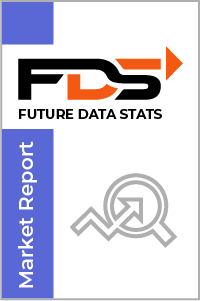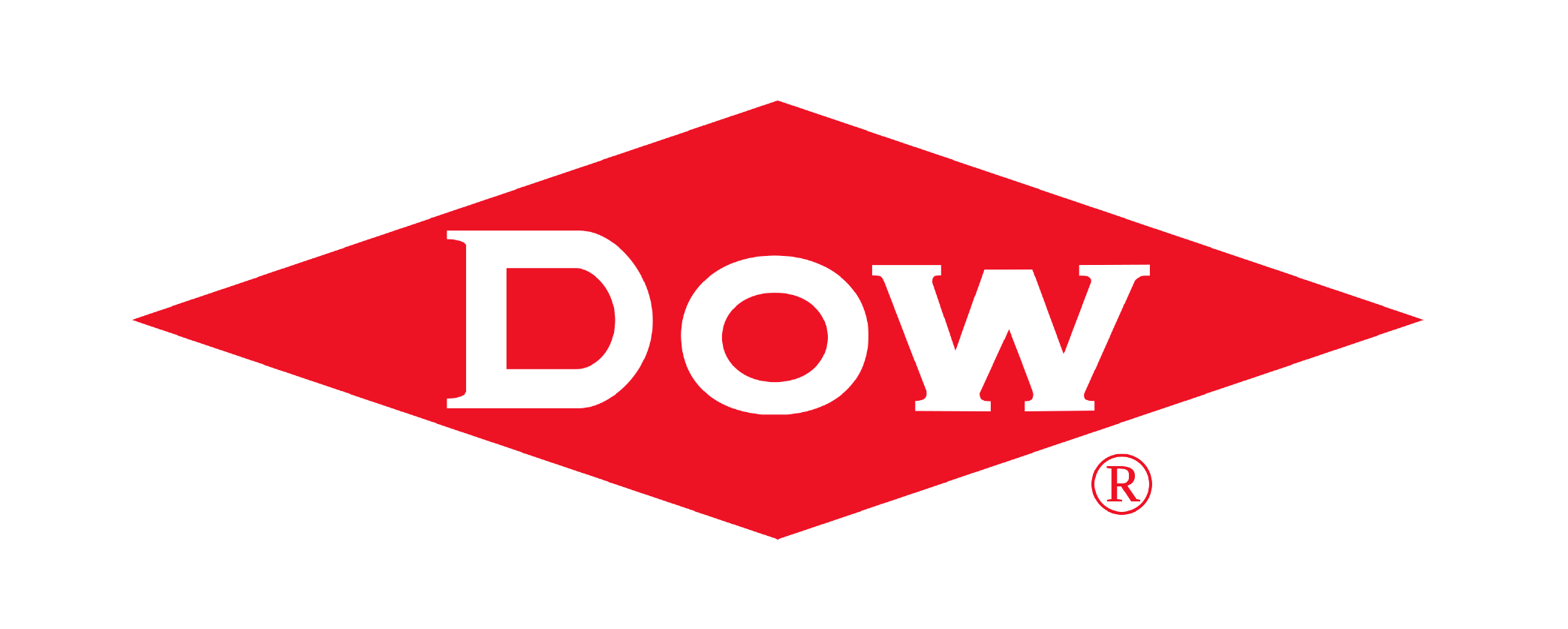The global Passenger Vehicle Market size was valued at USD 1.70 trillion in 2023 and is projected to expand at a compound annual growth rate (CAGR) of 7.1% during the forecast period, reaching a value of USD 3.26 trillion by 2030.
Passenger Vehicle Market research report by Future Data Stats, offers a comprehensive view of the Market's historical data from 2019 to 2022, capturing trends, growth patterns, and key drivers. It establishes 2023 as the base year, analysing the Market landscape, consumer behaviour, competition, and regulations. Additionally, the report presents a well-researched forecast period from 2024 to 2032, leveraging data analysis techniques to project the Market's growth trajectory, emerging opportunities, and anticipated challenges.
MARKET OVERVIEW:
Passenger vehicles, also known as automobiles or cars, are motor vehicles designed primarily for the transportation of people. These vehicles are specifically designed to accommodate passengers and provide a comfortable and convenient mode of transportation. Passenger vehicles typically have seating capacity ranging from two to several passengers, depending on the type and size of the vehicle. They are equipped with essential features such as seats, seat belts, air conditioning, and entertainment systems to enhance passenger comfort and safety. Passenger vehicles are widely used for personal commuting, family outings, and various commercial purposes, such as transportation services and rental companies. They play a crucial role in modern transportation, offering individuals and families the flexibility to travel conveniently and independently.
Passenger vehicles come in various types and configurations to cater to different preferences and needs. These include sedans, hatchbacks, SUVs (Sport Utility Vehicles), crossovers, convertibles, minivans, and pickup trucks, among others. They can be powered by different types of fuels, such as gasoline, diesel, electricity, or a combination of gasoline and electric power (hybrid vehicles). In recent years, there has been a growing trend towards the adoption of electric vehicles (EVs) due to their environmental benefits and advancements in battery technology. Passenger vehicles are manufactured and marketed by renowned automotive companies worldwide, offering a wide range of options in terms of design, performance, and features.
MARKET DYNAMICS:
Several drivers contribute to the expansion of the passenger vehicle market. Increasing disposable income and improving living standards of consumers are key drivers propelling the demand for passenger vehicles. Additionally, advancements in technology have led to the development of innovative features, such as advanced safety systems and connectivity options, which attract consumers seeking enhanced driving experiences. Furthermore, the growing urban population and expanding middle-class segment in emerging economies have created a strong customer base for passenger vehicles, further fueling market growth.
However, Stringent government regulations aimed at reducing carbon emissions and increasing fuel efficiency have compelled manufacturers to invest in alternative powertrain technologies. This transition to electric and hybrid vehicles presents challenges in terms of high production costs and developing robust charging infrastructure. Moreover, fluctuations in fuel prices and economic uncertainties can impact consumer purchasing power, leading to a slowdown in the passenger vehicle market. Additionally, the availability of efficient public transportation systems in some regions might deter potential buyers from investing in personal vehicles.
The passenger vehicle market offers significant opportunities for growth. The rising trend of shared mobility services, such as ride-hailing and car-sharing platforms, presents a lucrative market for passenger vehicle manufacturers. Collaborations with these service providers enable companies to tap into new customer segments and expand their market reach. Moreover, the increasing focus on autonomous driving technology opens doors for passenger vehicle manufacturers to develop self-driving cars that offer convenience and safety. Furthermore, the emerging markets in Asia-Pacific and Latin America provide untapped potential for market expansion, as growing economies and increasing urbanization create a demand for passenger vehicles.
PASSENGER VEHICLE MARKET SEGMENTAL ANALYSIS
BY TYPE:
Sedans, known for their comfortable seating and spacious interiors, remain a popular choice among consumers looking for a blend of style and functionality. Hatchbacks, on the other hand, are favored for their compact size and fuel efficiency, making them ideal for urban driving. SUVs and crossovers continue to dominate the market, offering versatility, ample cargo space, and off-road capabilities. Convertibles appeal to drivers seeking an open-air driving experience, while station wagons are valued for their ample storage capacity.
Moreover, the rising demand for eco-friendly transportation has led to an increase in the popularity of electric vehicles (EVs) and hybrid vehicles. These vehicles offer reduced emissions and lower operating costs, making them an attractive option for environmentally conscious consumers.
BY APPLICATION:
Personal use remains the primary driver of the passenger vehicle market, with consumers seeking vehicles that match their individual preferences and lifestyle. Whether it's for daily commuting, running errands, or family outings, personal vehicles provide convenience, comfort, and flexibility to their owners.
Commercial use of passenger vehicles is another significant factor driving market demand. Businesses rely on passenger vehicles for various purposes, including transportation of goods, services, and personnel. From small businesses to large enterprises, passenger vehicles play a crucial role in ensuring the smooth operation of businesses across various industries.
Furthermore, the rise of rental and leasing services, along with ride-sharing and carpooling services, has further fueled the demand for passenger vehicles. These services offer consumers convenient and cost-effective alternatives to traditional car ownership, contributing to the growth of the passenger vehicle market.
BY FUEL TYPE:
Gasoline-powered vehicles remain the most common choice among consumers, offering a convenient and widely accessible fuel option. With a well-established infrastructure for gasoline refueling, these vehicles provide a familiar and reliable driving experience for millions of drivers worldwide.
Diesel-powered vehicles, known for their fuel efficiency and torque, continue to be a popular choice, particularly for drivers with high mileage needs or those requiring heavy-duty performance. Despite concerns about emissions, advancements in diesel engine technology have led to cleaner and more environmentally friendly diesel vehicles.
In recent years, electric vehicles (EVs) and hybrid vehicles have gained significant traction in the passenger vehicle market. EVs offer zero-emission driving and are seen as a sustainable alternative to traditional internal combustion engine vehicles. Hybrid vehicles, which combine a gasoline engine with an electric motor, provide improved fuel efficiency and reduced emissions compared to conventional vehicles, making them an attractive option for environmentally conscious consumers.
REGIONAL ANALYSIS:
North America accounts for a significant share of the global passenger vehicle market, driven by a strong demand for personal and commercial vehicles. The region benefits from a well-established automotive industry, technological advancements, and a high level of consumer disposable income.
In Europe, stringent emission regulations and a growing focus on sustainability have fueled the demand for electric and hybrid vehicles. Additionally, urbanization and changing consumer preferences have led to a rise in demand for compact and fuel-efficient vehicles. The Asia Pacific region dominates the global passenger vehicle market, driven by the presence of key automotive manufacturing hubs, such as China, Japan, and South Korea. Rapid urbanization, rising disposable income levels, and a growing population have contributed to the increasing demand for passenger vehicles in this region.
KEY MARKET PLAYERS:
- Toyota Motor Corporation
- Volkswagen AG
- General Motors Company
- Ford Motor Company
- Honda Motor Co., Ltd.
- Hyundai Motor Company
- Nissan Motor Co., Ltd.
- BMW AG
- Mercedes-Benz (Daimler AG)
- Tesla, Inc.
- Fiat Chrysler Automobiles (FCA) NV
- Audi AG
- Subaru Corporation
- Kia Motors Corporation
- Mazda Motor Corporation
- Renault SA
- Tata Motors Limited
- Suzuki Motor Corporation
- Volvo Cars (Geely Holding Group)
- Mitsubishi Motors Corporation
- Jaguar Land Rover Automotive PLC
- Peugeot S.A.
- BYD Company Limited
- Geely Automobile Holdings Limited
- Dongfeng Motor Corporation
Table of Contents
Introduction
Market Overview
Market Size and Forecast
Market Drivers
Market Restraints
Market Opportunities
Market Trends
Segmentation by Type
Sedans
Hatchbacks
SUVs (Sport Utility Vehicles)
Crossovers
Convertibles
Station Wagons
Minivans
Pickup Trucks
Electric Vehicles (EVs)
Hybrid Vehicles
Segmentation by Application
Personal Use
Commercial Use
Rental and Leasing Services
Ride-Sharing and Carpooling Services
Segmentation by Fuel Type
Gasoline-Powered Vehicles
Diesel-Powered Vehicles
Electric Vehicles (EVs)
Hybrid Vehicles (Gasoline + Electric)
Segmentation by Price Range
Economy/Entry-Level
Mid-Range
Luxury/High-End
Segmentation by Size/Segment
Mini/Compact Cars
Mid-Size Cars
Full-Size Cars
Sports Cars
Luxury Cars
SUVs/Crossovers (Compact, Mid-Size, Full-Size)
Minivans
Pickup Trucks
Segmentation by Region
North America
Europe
Asia-Pacific
Latin America
Middle East and Africa
Segmentation by Brand
Toyota
Volkswagen
General Motors
Ford
Honda
Hyundai-Kia
Nissan
BMW
Mercedes-Benz
Audi
Segmentation by Market Segment
Economy/Basic Models
Family Cars
Sports and Performance Cars
Luxury Vehicles
Electric and Hybrid Cars
Commercial Vehicles
Competitive Landscape
Key Players
Conclusion
Passenger Vehicle Market Segmentation
By Type:
- Sedans
- Hatchbacks
- SUVs (Sport Utility Vehicles)
- Crossovers
- Convertibles
- Station Wagons
- Minivans
- Pickup Trucks
- Electric Vehicles (EVs)
- Hybrid Vehicles
By Application:
- Personal Use
- Commercial Use
- Rental and Leasing Services
- Ride-Sharing and Carpooling Services
By Fuel Type:
- Gasoline-Powered Vehicles
- Diesel-Powered Vehicles
- Electric Vehicles (EVs)
- Hybrid Vehicles (Gasoline + Electric)
By Geography:
- North America (USA, Canada, Mexico)
- Europe (Germany, UK, France, Russia, Italy, Rest of Europe)
- Asia-Pacific (China, Japan, South Korea, India, Southeast Asia, Rest of Asia-Pacific)
- South America (Brazil, Argentina, Columbia, Rest of South America)
- Middle East and Africa (Saudi Arabia, UAE, Egypt, Nigeria, South Africa, Rest of MEA)
Key Reasons to Buy this Report
- Comprehensive Insights: Market research reports provide in-depth and comprehensive insights into various industries, markets, and sectors. These reports are prepared after extensive data collection, analysis, and interpretation, offering you valuable information and a clear understanding of market trends, dynamics, and opportunities.
- Future Predictions: Market research reports often include future data statistics, forecasts, and predictions. These predictions are based on rigorous analysis and modeling techniques, taking into account various factors such as market growth drivers, challenges, and emerging trends. By accessing these future data stats, you can make informed decisions and develop strategies that align with the projected market scenarios.
- Industry Analysis: Market research reports offer detailed industry analysis, including factors such as market size, market share, competitive landscape, and key players. These reports provide an overview of the industry's current status, growth potential, and competitive dynamics, enabling you to identify lucrative opportunities and stay ahead of the competition.
- Market Trends and Opportunities: By purchasing market research reports, you gain access to up-to-date information on market trends and emerging opportunities. These reports highlight the latest consumer preferences, technological advancements, regulatory changes, and other influential factors shaping the market landscape. Keeping track of these trends helps you identify potential growth areas and adapt your business strategies accordingly.
- Risk Mitigation: Investing in a market research report can help mitigate risks associated with market uncertainties. The reports provide insights into potential risks, challenges, and barriers to entry in specific markets or industries. With this knowledge, you can develop risk mitigation strategies, anticipate market fluctuations, and make informed decisions to minimize potential losses.
- Investment Decision Support: Market research reports are valuable tools for investors, venture capitalists, and financial institutions. These reports provide reliable and data-driven information that aids in investment decision-making processes. By analyzing market research reports, investors can evaluate the market potential, assess the feasibility of investment opportunities, and gauge the expected returns on investment.
- Product Development and Innovation: Market research reports offer insights into consumer preferences, needs, and demands. This information can be leveraged for product development and innovation. By understanding the market dynamics and consumer behavior, you can tailor your products or services to meet the evolving needs of your target audience, leading to enhanced customer satisfaction and market success.
- Strategic Planning: Market research reports serve as a foundation for strategic planning. They provide a comprehensive overview of the market landscape, competitive positioning, and growth potential. With this knowledge, you can develop effective business strategies, set realistic goals, and allocate resources efficiently. Strategic planning based on accurate market research helps optimize your operations and improve your chances of success.
- Market Entry and Expansion: For businesses looking to enter new markets or expand their existing operations, market research reports are indispensable. These reports provide insights into market dynamics, consumer behavior, regulatory frameworks, and competitive landscapes specific to the target markets. This information helps you assess the feasibility of market entry, identify potential obstacles, and develop market entry strategies that increase your chances of success.
- Evidence-Based Decision Making: Market research reports provide evidence-based data and analysis, enabling you to make informed decisions. Rather than relying on assumptions or guesswork, you can base your decisions on reliable information and market insights. Evidence-based decision making reduces the risk of costly mistakes and increases the likelihood of achieving your business objectives.
RESEARCH METHODOLOGY
With a collective industry experience of about 70 years of analysts and experts, Future Data Stats encompasses the most infallible research methodology for its market intelligence and industry analysis. Not only does the company dig deep into the innermost levels of the market, but also examines the minutest details for its market estimates and forecasts.
This approach helps build a greater market-specific view of size, shape, and industry trends within each industry segment. Various industry trends and real-time developments are factored into identifying key growth factors and the future course of the market. The research proceeds are the results of high-quality data, expert views & analysis, and valuable independent opinions. The research process is designed to deliver a balanced view of the global markets and allows stakeholders to make informed decisions, to attain their highest growth objectives.
Future Data Stats offers its clients exhaustive research and analysis, based on a wide variety of factual inputs, which largely include interviews with industry participants, reliable statistics, and regional intelligence. The in-house industry experts play an instrumental role in designing analytic tools and models, tailored to the requirements of a particular industry segment. These analytical tools and models distill the data & statistics and enhance the accuracy of our recommendations and advice.
With Future Data Stats calibrated research process and 360° data-evaluation methodology, the clients receive:
- Consistent, valuable, robust, and actionable data & analysis that can easily be referenced for strategic business planning
- Technologically sophisticated and reliable insights through a well-audited and veracious research methodology
- Sovereign research proceeds that present a tangible depiction of the marketplace
With this strong methodology, Future Data Stats ensures that its research and analysis is most reliable and guarantees sound business planning.
The research methodology of the global market involves extensive primary and secondary research. Primary research includes about 24 hours of interviews and discussions with a wide range of stakeholders that include upstream and downstream participants. Primary research typically is a bulk of our research efforts, coherently supported by extensive secondary research. Over 3000 product literature, industry releases, annual reports, and other such documents of key industry participants have been reviewed to obtain a better market understanding and gain enhanced competitive intelligence. In addition, authentic industry journals, trade associations’ releases, and government websites have also been reviewed to generate high-value industry insights.
Primary Research:
|
Primary Research
|
Desk Research
|
Company Analysis
|
|
• Identify key opinion leaders • Questionnaire design • In-depth Interviews • Coverage across the value chain
|
• Company Website • Company Annual Reports • Paid Databases • Financial Reports
|
• Market Participants • Key Strengths • Product Portfolio • Mapping as per Value Chain • Key focus segment
|
Primary research efforts include reaching out to participants through emails, telephonic conversations, referrals, and professional corporate relations with various companies that make way for greater flexibility in reaching out to industry participants and commentators for interviews and discussions.
The aforementioned helps to:
- Validate and improve data quality and strengthen the research proceeds
- Develop a market understanding and expertise
- Supply authentic information about the market size, share, growth, and forecasts
The primary research interview and discussion panels comprise experienced industry personnel.
These participants include, but are not limited to:
- Chief executives and VPs of leading corporations specific to an industry
- Product and sales managers or country heads; channel partners & top-level distributors; banking, investments, and valuation experts
- Key opinion leaders (KOLs)
Secondary Research:
A broad array of industry sources for the secondary research typically includes, but is not limited to:
- Company SEC filings, annual reports, company websites, broker & financial reports, and investor presentations for a competitive scenario and shape of the industry
- Patent and regulatory databases to understand technical & legal developments
- Scientific and technical writings for product information and related preemptions
- Regional government and statistical databases for macro analysis
- Authentic news articles, web-casts, and other related releases to evaluate the market
- Internal and external proprietary databases, key market indicators, and relevant press releases for market estimates and forecasts
|
PRIMARY SOURCES |
DATA SOURCES |
|
• Top executives of end-use industries • C-level executives of the leading Parenteral Nutrition companies • Sales manager and regional sales manager of the Parenteral Nutrition companies • Industry Consultants • Distributors/Suppliers
|
• Annual Reports • Presentations • Company Websites • Press Releases • News Articles • Government Agencies’ Publications • Industry Publications • Paid Databases
|
Analyst Tools and Models:
|
BOTTOM-UP APPROACH |
TOP-DOWN APPROACH |
|
· Arriving at · Arriving at · Market Share · Key Market Players |
· Key Market Players · Market Share · Arriving at · Arriving at |
Passenger Vehicle Market Dynamic Factors
Drivers:
- Growing demand for fuel-efficient vehicles
- Increasing disposable income in emerging economies
- Technological advancements in electric and hybrid vehicles
Restraints:
- Fluctuating fuel prices impacting consumer purchasing decisions
- Stringent government regulations regarding emissions and safety standards
- Supply chain disruptions affecting production and delivery
Opportunities:
- Rising adoption of autonomous vehicles
- Expansion of the electric vehicle charging infrastructure
- Growing preference for ride-sharing and car subscription services
Challenges:
- Intense competition among manufacturers
- Economic uncertainty due to global events
- Consumer skepticism regarding the reliability of electric vehicles
Frequently Asked Questions















